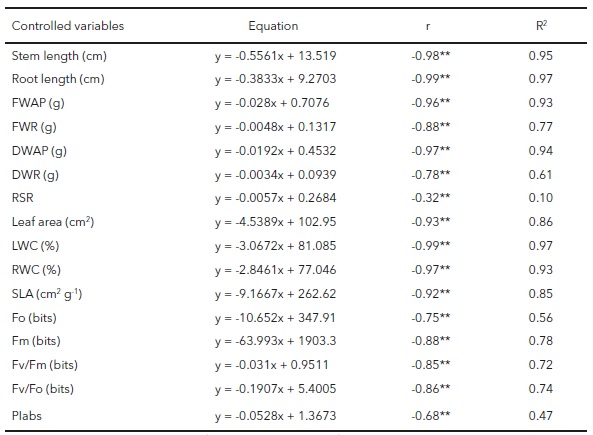Morphological and physiological responses of Coccoloba uvifera (L.) L. seedlings of dif ferent origin to salt stress
DOI:
https://doi.org/10.28940/terra.v41i0.1655Keywords:
fluorescencia de clorofila, morfofisiología, salinidad, uva de mar, estado hídricoAbstract
The salinity of soils and water for irrigation is a limitation that influences the productivity of crops that has increased worldwide and af fects the morphology and physiology of plants since it causes osmotic stress and ionic toxicity and impairs the absorption of water and nutrients. The ef fect of salt stress on some morphological and physiological traits in Coccoloba uvifera (L.) L. (sea grape) seedlings from dif ferent origins was evaluated and the traits whose behavior under salt stress could be used as an ef fective criterion of tolerance to salinity were determined. A completely randomized design experiment with ten repetitions was performed. The factors under study were salinity (0, 5, 15, and 25 dS m-1), which was maintained for a period of sixteen weeks, and the second factor was the origin of the plant material. The salinity level and the seedlings’ origin significantly influenced the morphological and physiological variables controlled. However, it is necessary to carry out in situ experiments to obtain more information related to the mechanisms used by sea grape to tolerate salinity conditions, because in the consulted sources no research focused on evaluating the ef fect of salinity and the origin on the morphology and physiology of C. uvifera seedlings in Cuba has been found. The results of the research provide preliminary information to understand the negative ef fect of salt stress on this type of plant. The behavior of some controlled traits under salt stress can be used as an ef fective criterion of tolerance to salinity.
Downloads
Publication Facts
Reviewer profiles N/A
Author statements
- Academic society
- Terra Latinoamericana
- Publisher
- Mexican Society of Soil Science, C.A.

















